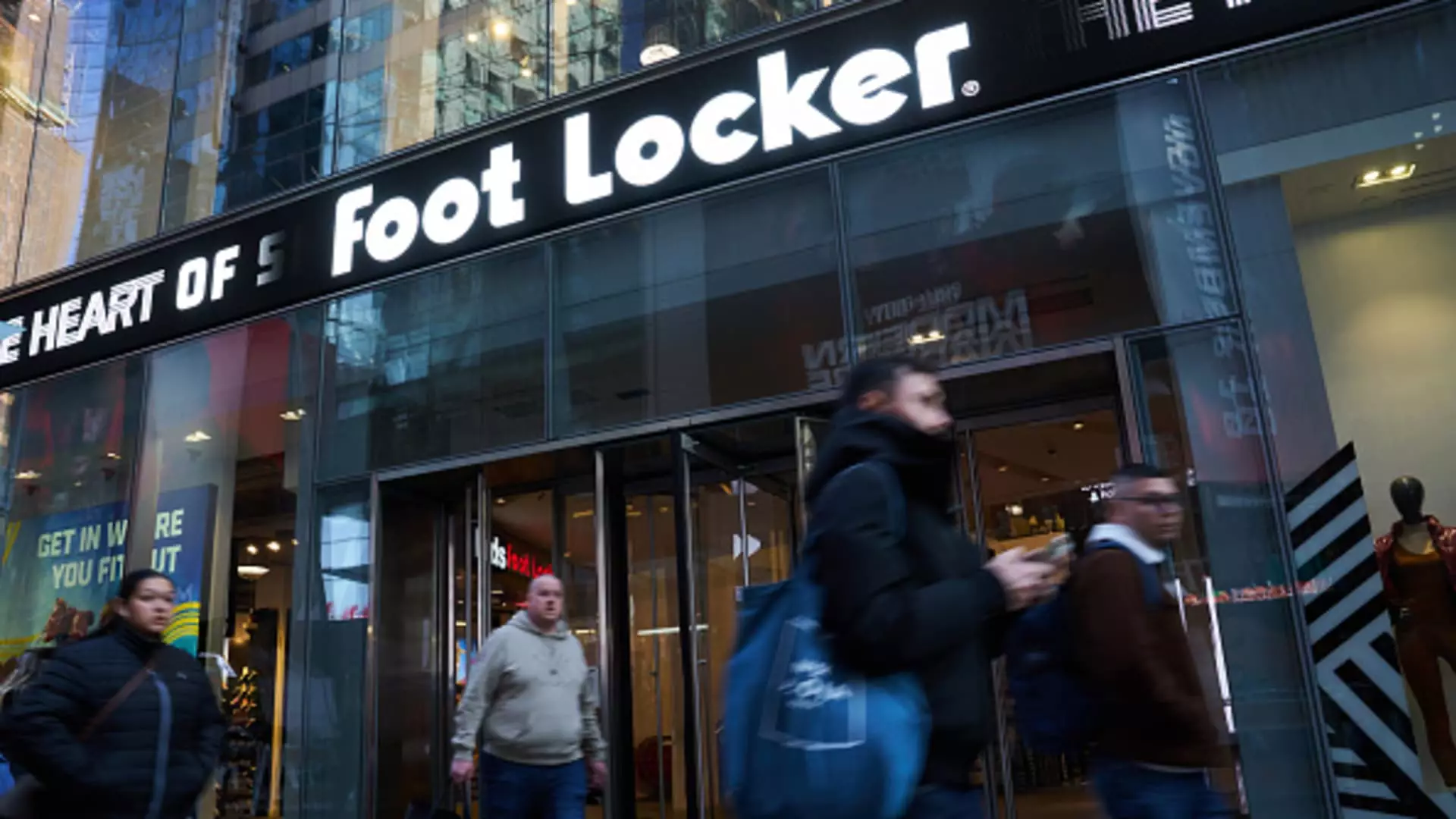Foot Locker recently reported positive growth in comparable sales for the first time in six quarters, demonstrating the effectiveness of its store refresh initiatives and commitment to enhancing the customer experience. The company’s same-store sales increased by 2.6% during the fiscal second quarter, surpassing analysts’ expectations of a 0.7% uptick. In addition, Foot Locker’s gross margin expanded for the first time in more than two years.
Despite the positive sales trends, Foot Locker’s shares dropped approximately 8% in premarket trading following the earnings report. The company reported an adjusted loss per share of 5 cents, outperforming the 7 cents per share loss that analysts had projected. Revenue for the quarter stood at $1.90 billion, slightly higher than the expected $1.89 billion. Looking ahead, Foot Locker maintained its guidance for the current fiscal year, anticipating sales to range from a 1% decline to 1% growth compared to the prior year.
Strategies Under CEO Mary Dillon
Since the appointment of CEO Mary Dillon, formerly of Ulta Beauty, Foot Locker has undergone significant transformation to stay relevant in the evolving retail landscape. Dillon’s focus on strengthening the company’s relationship with key brand partner Nike, as well as revitalizing its store fleet, has played a crucial role in driving Foot Locker’s performance. The company plans to invest $275 million in store upgrades this year, with the aim of remodeling two-thirds of its store fleet by the end of fiscal 2025.
Store Innovations and Strategic Partnerships
Foot Locker’s collaboration with Nike in developing new megastores in prominent locations like New York City and Paris reflects a strategic shift towards fostering deeper partnerships with key suppliers. By leveraging consumer insights and driving mutual growth, Foot Locker aims to enhance the overall customer experience and drive financial returns. The company’s focus on upgrading stores has resulted in improved conversion rates, larger basket sizes, and increased profitability, particularly in the women’s segment.
To streamline costs and optimize operational efficiency, Foot Locker announced the closure of stores and e-commerce operations in certain markets, including South Korea, Denmark, Norway, and Sweden. By entrusting operations in Greece and Romania to a third party, Foot Locker aims to enhance its market presence and drive expansion in key regions. Additionally, plans to shift the global headquarters from New York City to St. Petersburg, Florida, are projected to generate margin improvements and facilitate collaboration across teams and functions.
Foot Locker’s decision to relocate its headquarters aims to bolster collaboration among teams and capitalize on existing talent in St. Petersburg. The move is not solely driven by cost savings but also by the synergies created through enhanced collaboration. CEO Mary Dillon’s flexibility in maintaining her primary residence in Chicago reflects a commitment to fostering a cohesive and efficient work environment while balancing global responsibilities. Foot Locker’s emphasis on employee well-being and work-life balance underscores a people-centric approach to organizational development.
Market Dynamics and Consumer Trends
As Foot Locker continues to enhance its stores, products, and customer experience, the company navigates uncertainties stemming from inflation and high interest rates. By focusing on meeting the evolving needs of its core consumer base, Foot Locker aims to differentiate itself in a competitive retail landscape. Despite subdued demand across the industry, consumers remain selective in their spending habits, underscoring the importance of strategic execution and customer-centric initiatives.
Foot Locker’s recent successes underscore the transformative impact of CEO Mary Dillon’s strategic vision and operational initiatives. By prioritizing store enhancements, partnerships with key suppliers, and cost efficiency measures, Foot Locker has positioned itself for sustained growth and relevance in a rapidly evolving retail environment. As the company adapts to changing consumer preferences and market dynamics, its focus on innovation and customer engagement remains central to future success.

